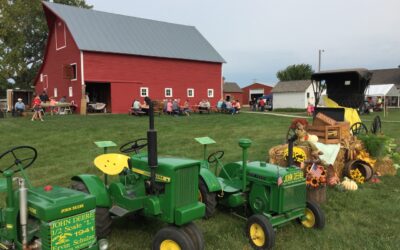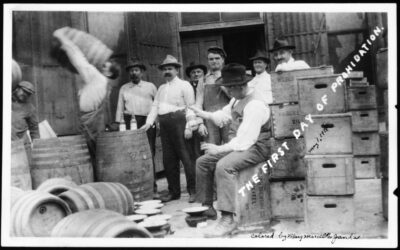Marker Text
From 1050 – 1400 the lower Platte and Missouri River valleys were home to prehistoric Indian farmers. These people lived in small villages and isolated farmsteads, cultivated corn and beans, and hunted game. The Indians built square-shaped houses made of logs and covered with earth, with long, earth-covered entryways. They were substantial structures containing a fireplace, beds, storage areas, and trash pits. Remains of these earthlodges are found in the park.
Here is the site of a prehistoric cemetery used by these early Indians. Archeological evidence indicates that the bodies were exposed to the elements until only bones remained. The bones were buried later in a communal graveyard. The practice of cemetery burial by these prehistoric people indicate their deep regard for the afterlife.
Because few such cemeteries are known, this site is an irreplaceable resource for the study of Nebraska’s early inhabitants. It has been listed in the National Register of Historic Places and preserved by the Nebraska Game and Parks Commission and the Nebraska State Historical Society.
Location
Eugene T. Mahoney State Park, 4 miles south of Ashland ~ Near cabin loop inside park. Located HERE.
Further Information
When the communal Indigenous burial site was discovered during construction of an access road in Eugene T. Mahoney State Park, the History Nebraska State Archeological Office (SAO), Nebraska Games and Parks Commision, and the Nebraska Department of Transportation worked together by state and federal laws which govern how such circumstances are handled.
What happens when unmarked human remains are discovered?
Local law enforcement should be contacted within 48 hours of the discovery. Once a forensic connection is ruled out, law enforcement will contact the SAO to conduct an archeological evaluation. If the remains are on federal land, archeologists from the federal agency will conduct the assessment.
In archeological contexts, the most desirable outcome is to leave the remains in place through efforts such as soil stabilization or a modification to project plans. In this case, the project plans were modified so the road avoided the site to preserve it in place.
In many cases, remains have been disinterred or cannot be preserved in place. In those circumstances, SAO staff will take possession and make determinations of age, sex, and most importantly biological affiliation such as: Euroamerican, Native American, or African American. This is done in cooperation with trained physical anthropologists. If remains are believed to be Indigenous, we will work with tribes under the Native American Graves Protection and Repatriation Act (NAGPRA) to determine which tribe or group of tribes the remains should be repatriated to for reburial. Factors considered include: associated funerary artifacts, skeletal features, burial pattern, geographic location, and oral traditions.
NAGPRA (Native American Graves Protection and Repatriation Act)
Prior to the late twentieth century, human remains were often removed from their burial places for research purposes and as a result of development. The recovered remains were then stored in public and private collections across the country. By the 1970s, Native American groups began to express their indignation for such practices and resentment for the storage of their ancestors’ remains in museum warehouses.
By the early 1990s, a series of state and federal laws (NAGPRA and the Unmarked Human Burial Sites and Skeletal Remains Protection Act) were enacted with the intent to protect burial sites and repatriate human remains and associated funerary objects to descendent groups when encountered. At the time, the SAO held hundreds of individuals’ remains in its collections as a result of donations, inadvertent discoveries, and research. These laws directed the office to determine as specifically as possible who the remains were related to and to work with descendant groups on repatriation. The same laws continue to guide SAO’s response to unmarked burials and human remains today.
Between 1990 and 2017, the SAO repatriated the remains of nearly 700 individuals and over 30,000 artifacts from about 80 sites across Nebraska. These remains have been returned largely to the Pawnee Nation of Oklahoma with additional remains repatriated to the Northern Ponca, Ioway, Oto-Missouria, Omaha, Wichita, Arikara, and Northern Cheyenne tribes.





